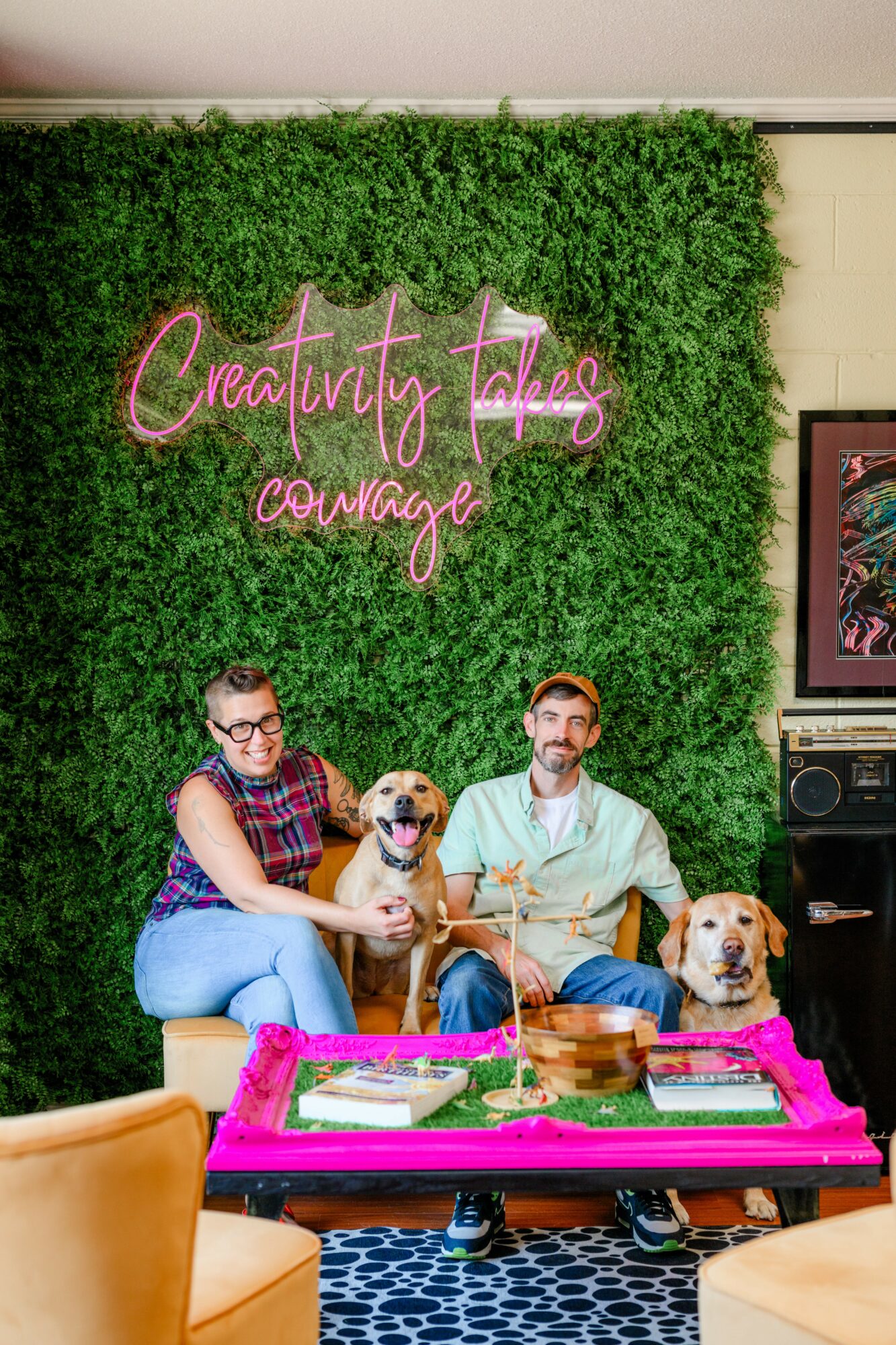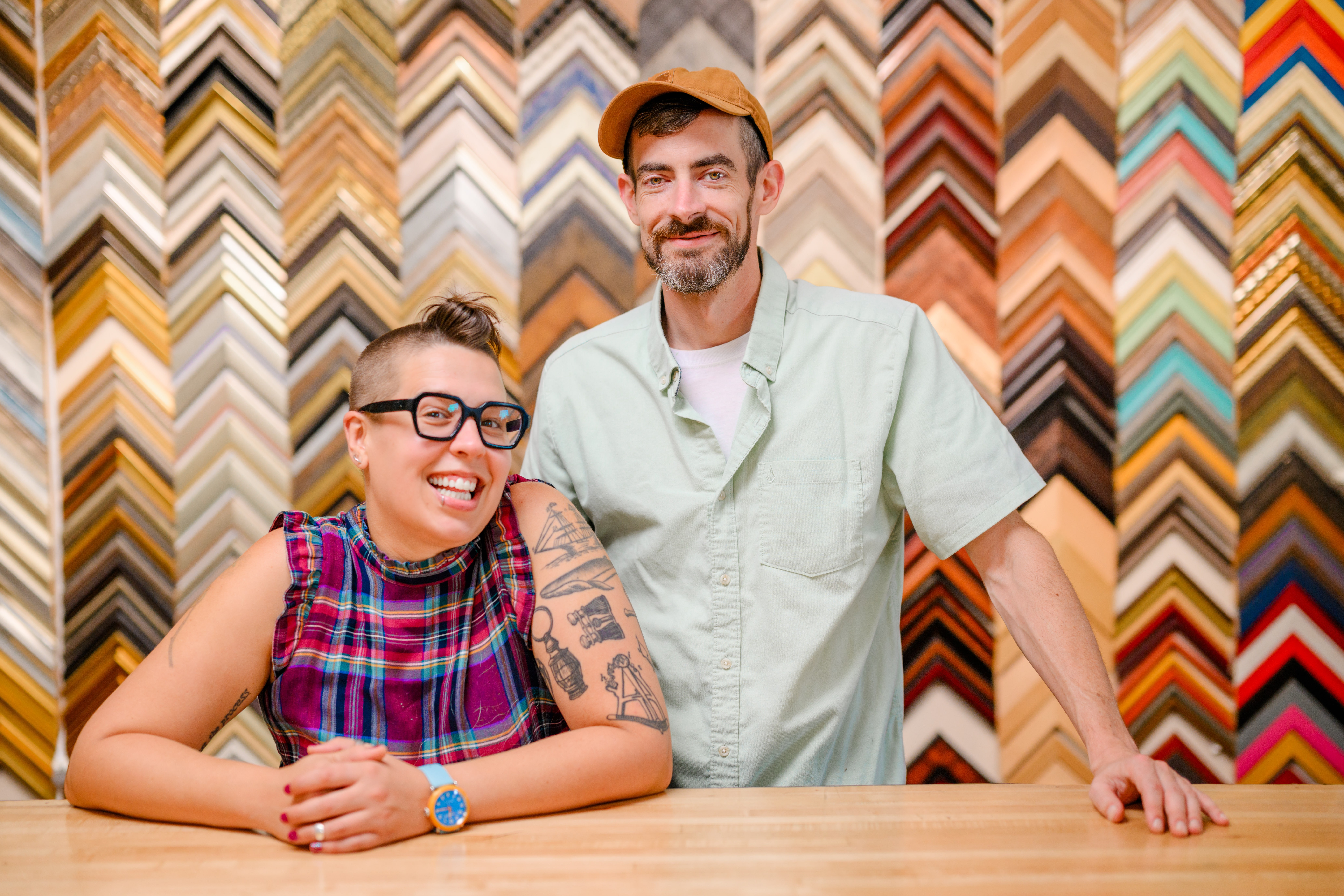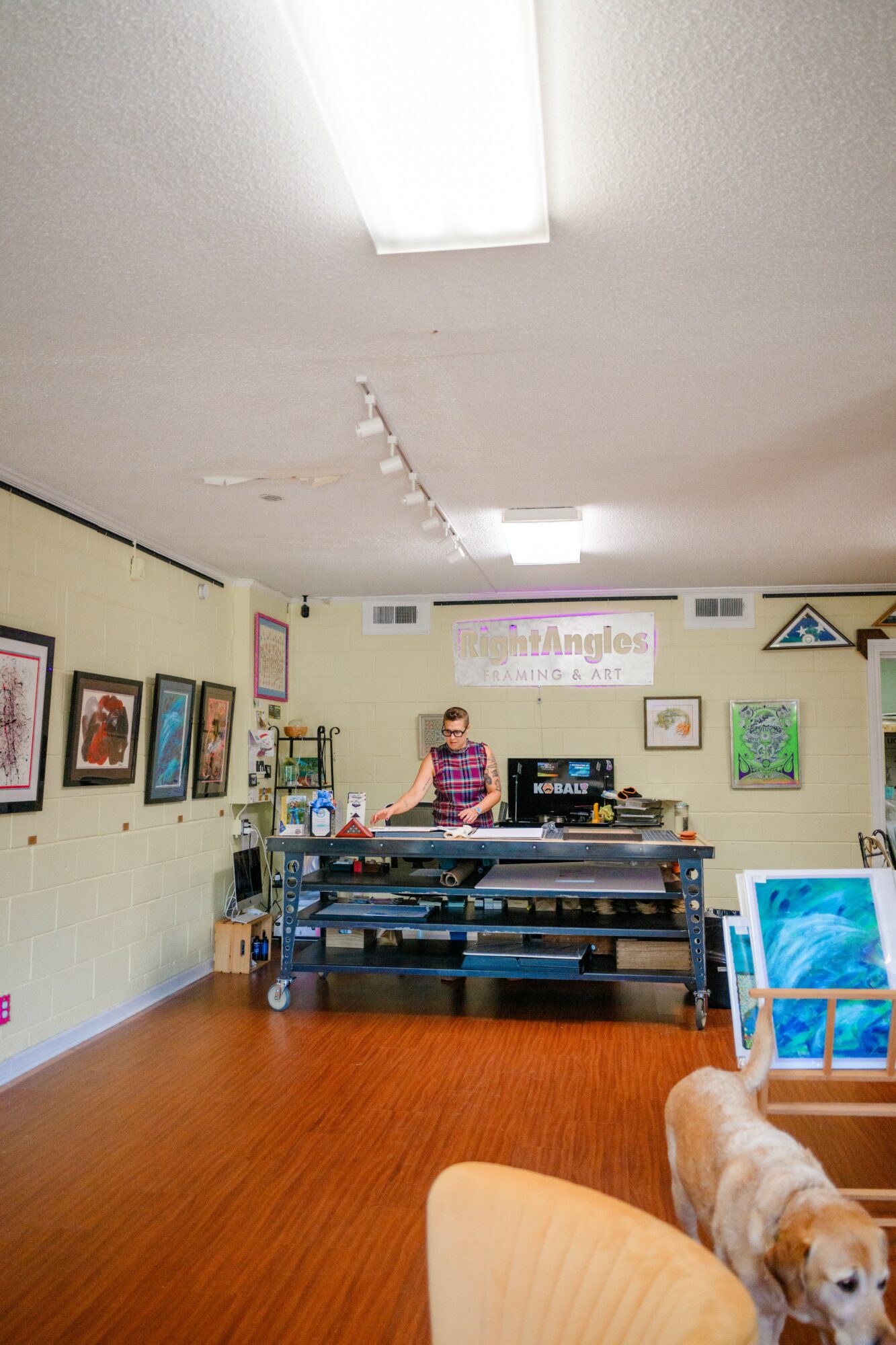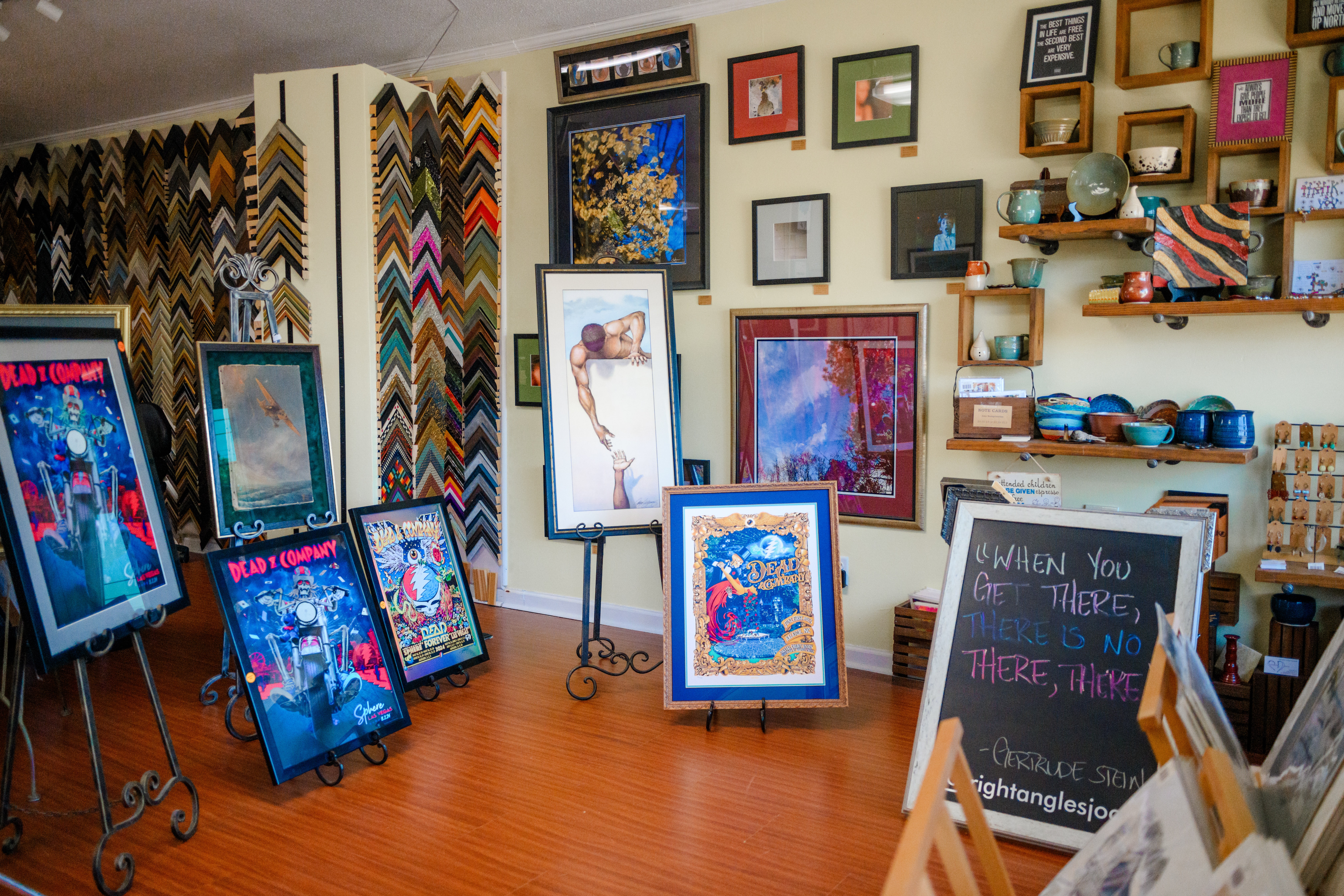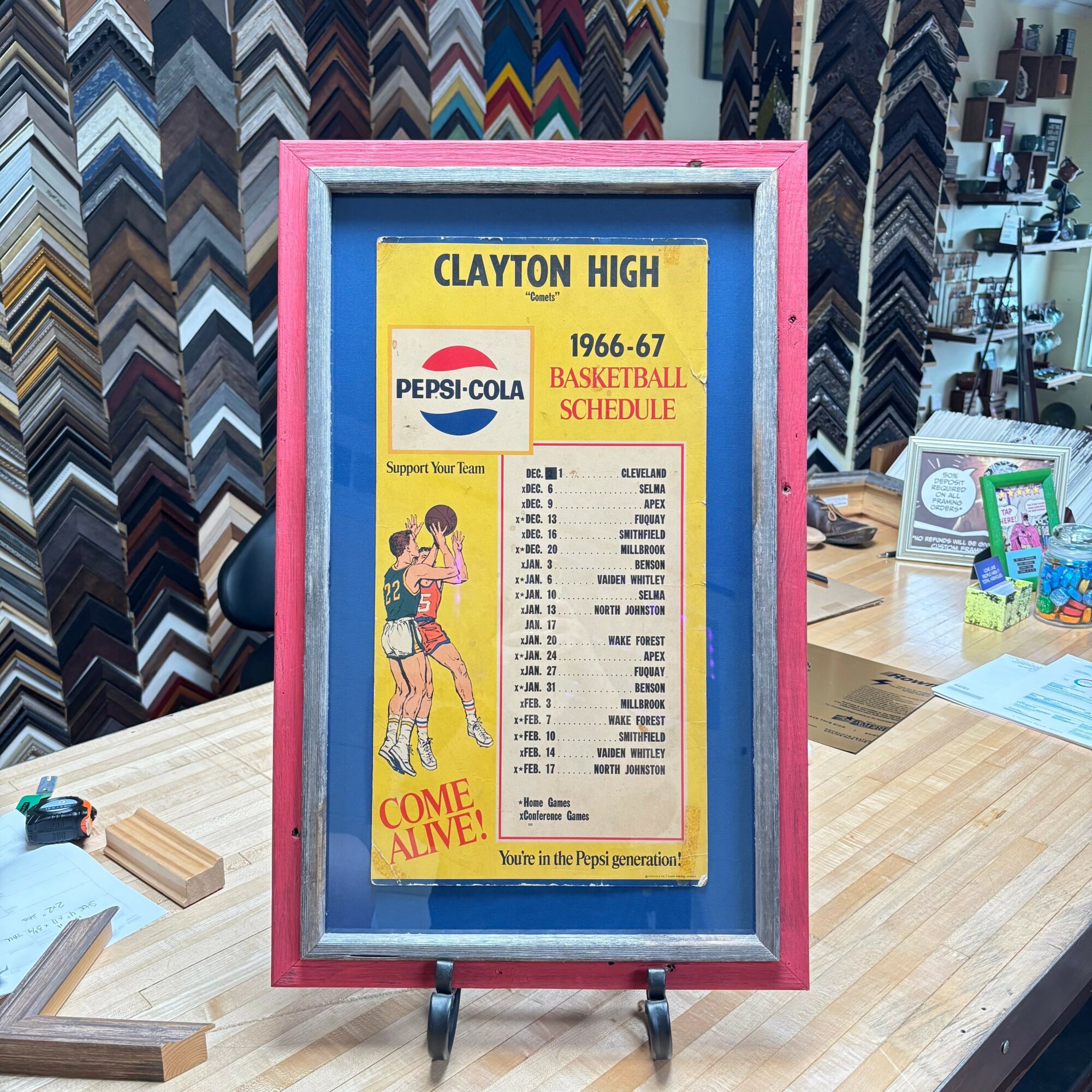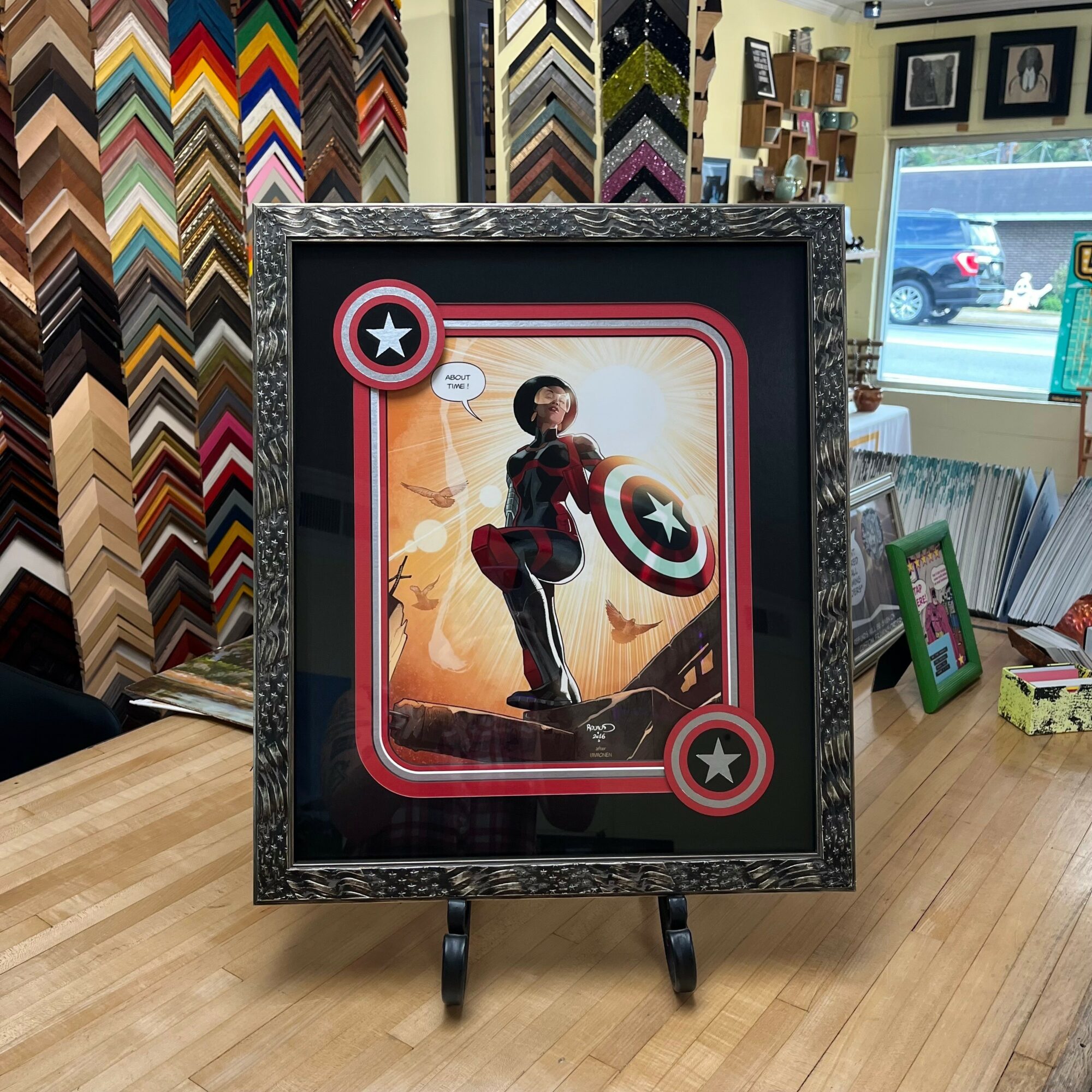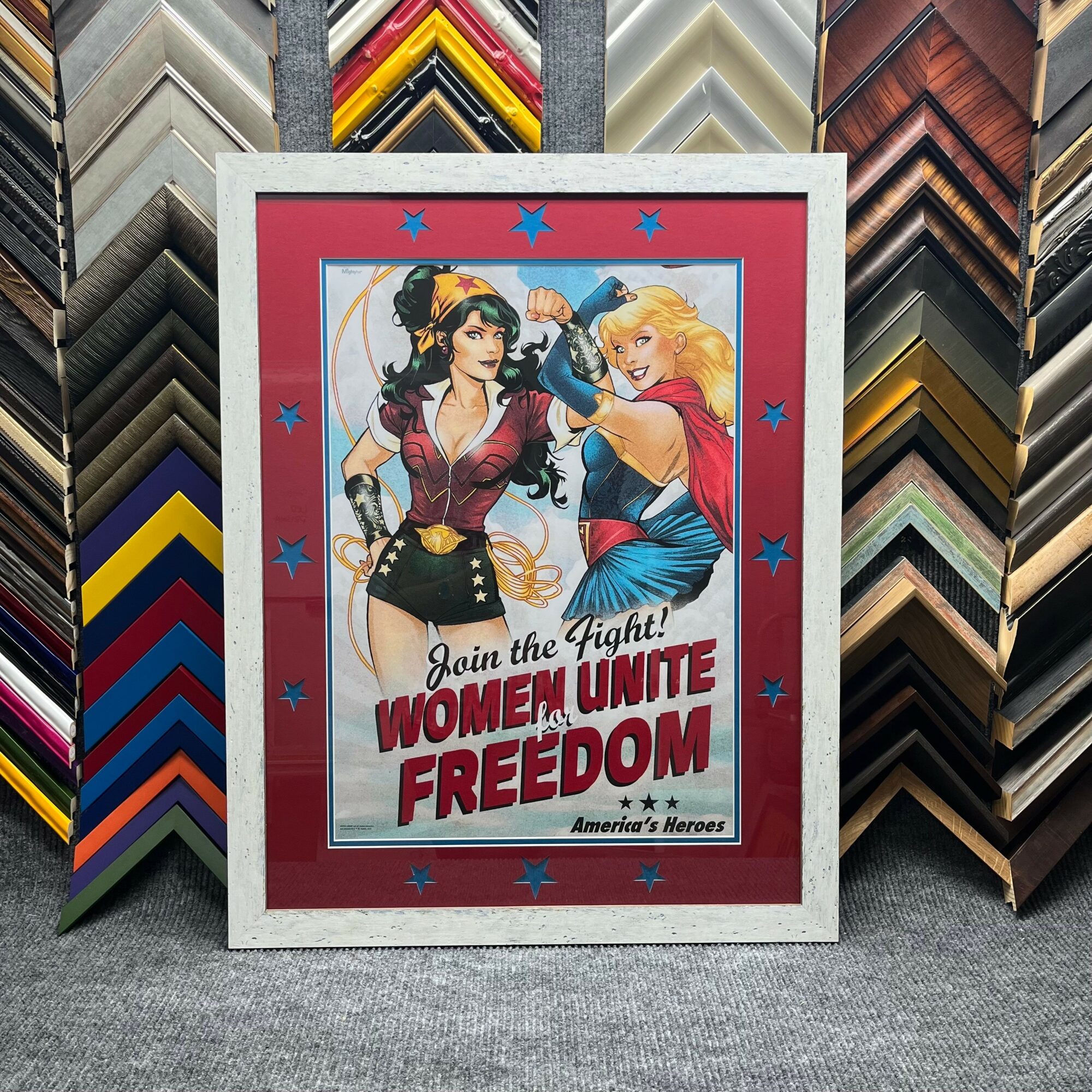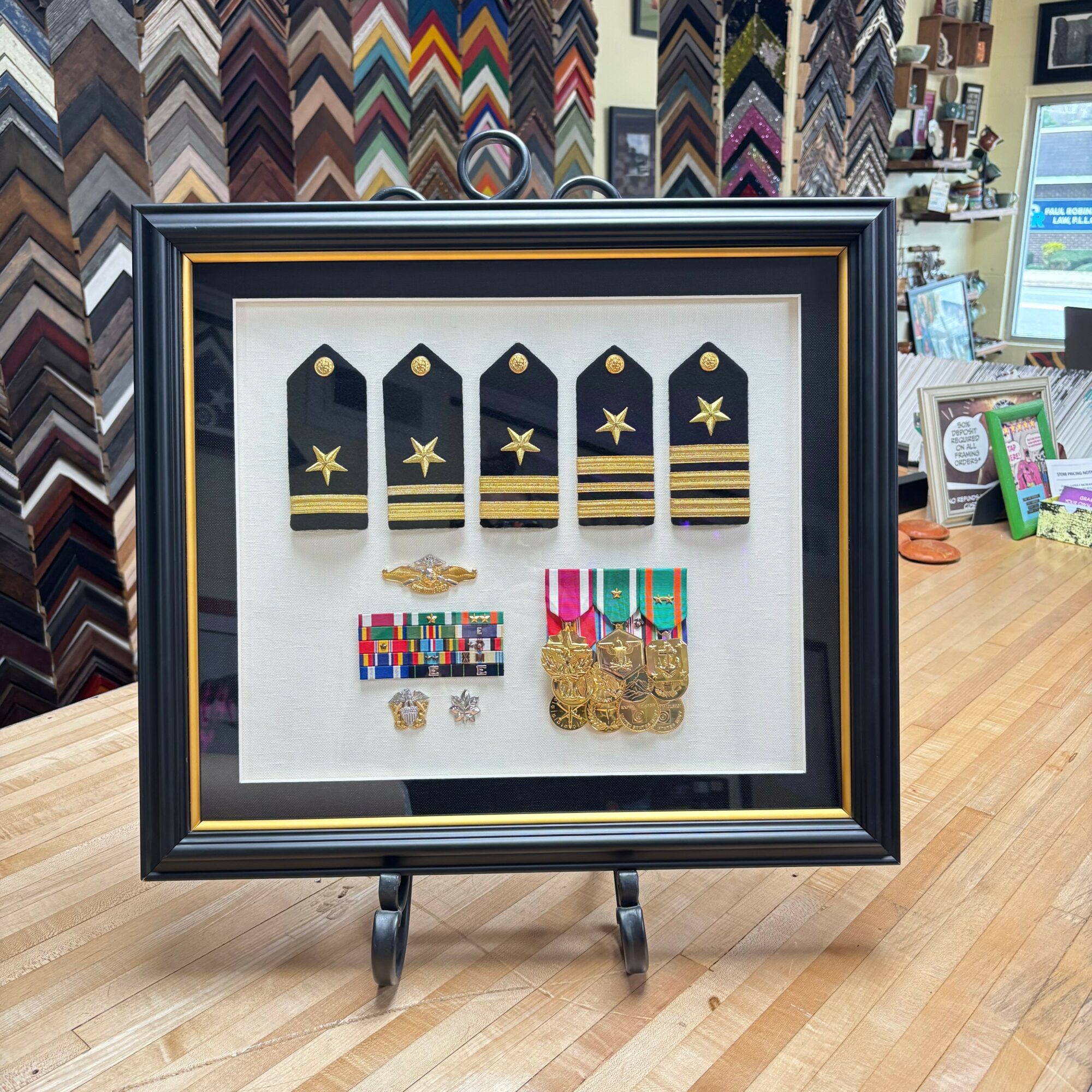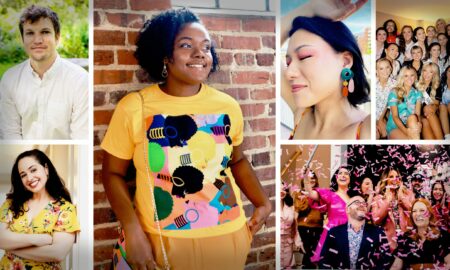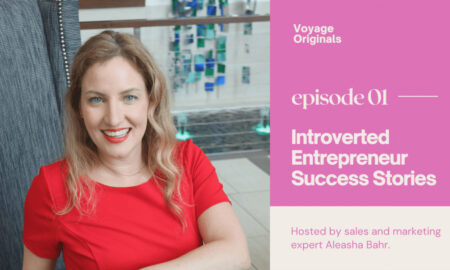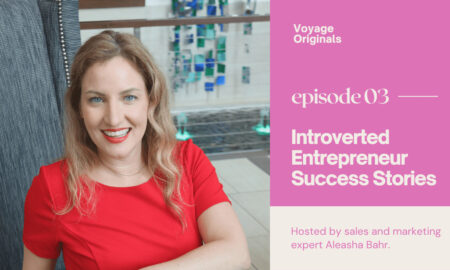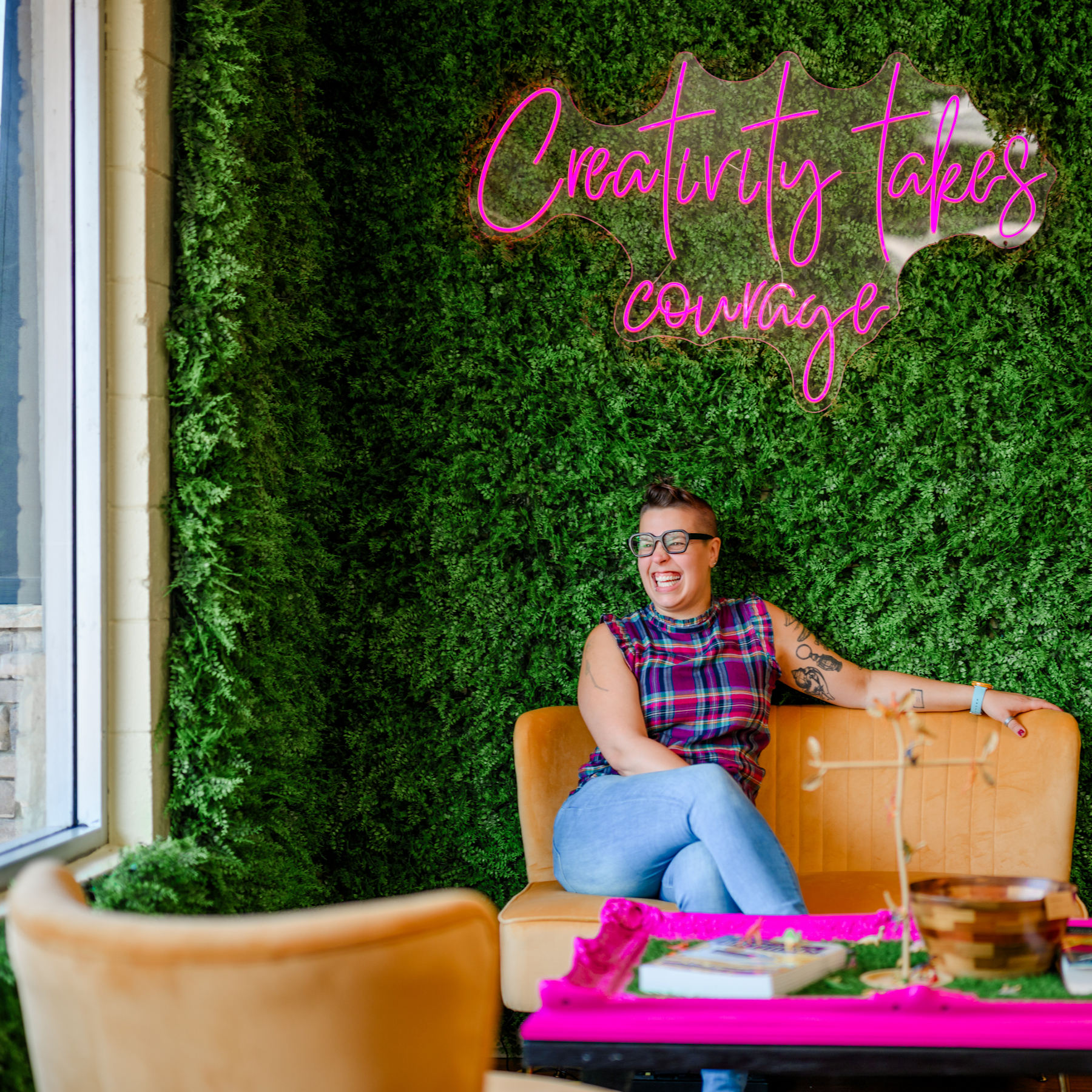

Today we’d like to introduce you to Jess Stambaugh.
Jess, we appreciate you taking the time to share your story with us today. Where does your story begin?
Becoming a small business owner — and a professional picture framer, of all things — was never the plan. It wasn’t even on the list. But life has a way of handing you the unexpected, and if you’re lucky, you figure out how to say yes to it. So here I am.
As a photography student at the New England School of Photography, I studied what would now be called analogue photography. I majored in black and white film, and double minored in color and zone system. I was fortunate to learn under a professor who was not only a master of the zone system, but also a professional framer in Massachusetts. It was through him that I first learned how to frame — not as a hobby, but as a skill set essential to surviving as an artist.
When you’re a broke art student trying to get your work seen, framing isn’t optional. You can’t show up to a gallery with loose prints and hope for the best. Presentation matters. Craft matters.
What started as a necessity quickly became something more. I fell in love with the process — the precision, the rhythm, the quiet focus it requires. Framing became its own kind of art form to me. A good frame doesn’t just hold a piece — it elevates it. It protects it. It says: this matters.
Years later, after moving to North Carolina, my partner and I had just bought our first home in Clayton when I wandered into a little frame shop downtown. I needed something framed immediately — as in, yesterday — and met Janet, the owner. She politely told me she couldn’t get it done that fast. But then, almost in passing, she mentioned she was ready to retire. If we were interested, the shop was for sale.
We went in looking for a rush job. We left thinking about a life we hadn’t planned for.
Three years later, we’re still here. Still figuring it out one piece at a time. Still learning what it means to run a small business, to show up for a community, to take care of people’s most meaningful things. It wasn’t what we set out to do — but it turns out, it’s exactly where we belong.
Would you say it’s been a smooth road, and if not what are some of the biggest challenges you’ve faced along the way?
Has it been a smooth road? Not really — but it’s been a meaningful one.
My partner and I both came from backgrounds in custom manufacturing, so we were no strangers to hands-on work. But the business side — financials, legal, accounting — that was always someone else’s department. Learning all of that from the ground up has been a whirlwind.
Add to that my ADHD, and I’ve had to completely reinvent how I manage time, focus, and energy. What worked in art school or past jobs doesn’t always translate to running a business. It’s taken a lot of unlearning, rebuilding, and patience.
We’re lucky, though — Clayton has an incredible small business community. We’ve had support from mentors, peers, and programs like LaunchJoCo through the Chamber of Commerce, which helped us build a stronger foundation.
Of course, I’ve also had to learn from some mistakes the hard way — including a hospital visit and my first time ever having stitches, thanks to poor glass-handling techniques in the early days. I’ve since learned that cut-proof gloves are my friend, and I will never let that happen again.
But honestly? The hardest part for me has been time — and, I’ve recently learned, energy — management. I have ideas all the time. I care deeply about the work I do. And sometimes projects will keep me up at night because I can’t turn my brain off. There is never enough time to do everything I want to do.
Year three of small business ownership, for me, is about figuring out balance. About working hard, but also working sustainably. About protecting my energy the same way I’ve learned to protect my hands.
Still learning. Still showing up. Still figuring it out.
Can you tell our readers more about what you do and what you think sets you apart from others?
At its core, my artwork explores identity and the human condition through the lens of my own experience — both the deeply personal and the broadly collective. While I have a formal background in photography, I consider myself a conceptual artist first. For me, the idea always comes before the medium. Photography and collage are my primary languages, but I’m an artist of all trades, master of none — and I like it that way.
I collect tools — physically and metaphorically — and carry them until the right project calls for them. I’m not precious about medium. I’ll use whatever the work needs. I’m currently learning tintypes and experimenting with gel printing, and I always have a few side projects in motion. I draw inspiration from artists across disciplines: Marina Abramović, Jenny Holzer, Alok, Claude Cahun, Joseph Cornell. I’m also endlessly fueled by music — it’s part of my creative rhythm.
One of my longest-running projects is a daily photography practice I’ve been doing for over five years — now at the beginning of my sixth. Every year, I choose a new theme to guide the work, and I create one photograph every day within that framework. This year’s theme comes from a line in Outside the Dog Museum by Jonathan Carroll: “I don’t know how other people go insane, but my way was at least novel.”
This ongoing project has become many things over time — a way to document, to process, to stay present, and to let go of perfectionism. It’s a daily ritual of persistence and attention. Some days the image is considered and crafted. Some days it’s whatever I can manage. That’s part of the point.
More than anything, I think of my practice as an ongoing investigation — into selfhood, absurdity, care, memory, and the strange, quiet moments that make us who we are.
What I’m most proud of is the consistency and care I’ve brought to my creative practice over time. I’ve stuck with it — through burnout, distraction, doubt, and major life shifts. I’ve found ways to keep making, even when the work was quiet, or messy, or unseen. That long-term commitment — especially to my daily photo project — feels like a kind of quiet resistance in a world that asks for speed and perfection. I’m proud of showing up, even when it’s hard.
I’m also proud of the way I’ve turned what started as a practical skill — framing — into a space for service, preservation, and connection. People trust me with objects that matter deeply to them, and I take that seriously.
What sets me apart, I think, is that I live in both worlds — artist and framer, maker and caretaker. I understand the emotional and material value of objects, not just from a technical standpoint, but from the inside out. I’m not afraid to get weird with materials or push on the edges of what art is supposed to look like. But I’m also meticulous when it comes to craft. I care about the whole arc — the making, the meaning, and the preservation.
And I think people feel that when they work with me.
Risk taking is a topic that people have widely differing views on – we’d love to hear your thoughts.
I think risk looks different for everyone. For me, it’s rarely been about bold, dramatic gestures — it’s usually quieter. More internal. It’s saying yes before I feel ready. It’s trusting that I’ll figure things out as I go. It’s moving toward something unknown because something in me says try.
Getting into this was absolutely a risk. Leaving a job I loved — one where I felt fulfilled, where I believed in the mission and the people — was not easy. I wasn’t running from something. I was moving toward something that didn’t exist yet. That kind of shift is its own leap.
Buying a frame shop in a small Southern town I had just moved to, with no formal business background, wasn’t part of some carefully constructed plan. It was a conversation that turned into a gut decision that turned into an entirely different life.
But so is being an artist. So is putting your work into the world and letting people respond to it — or not. So is saying yes to the projects that scare you. So is committing to a daily photo practice for six years, knowing some days the work will fall flat and doing it anyway.
I don’t think of myself as a risk-taker in the classic sense. But I do think I’ve built a life by moving toward the things I care about — even when they don’t make perfect sense on paper. And I’ve learned that risk isn’t always about fearlessness. Sometimes it’s about care. Sometimes it’s about patience. Sometimes it’s just a quiet belief that you’ll find your way.
Contact Info:
- Website: https://www.rightanglesart.com
- Instagram: https://www.instagram.com/rightanglesjoco/
- Facebook: https://www.facebook.com/profile.php?id=100089334402211
